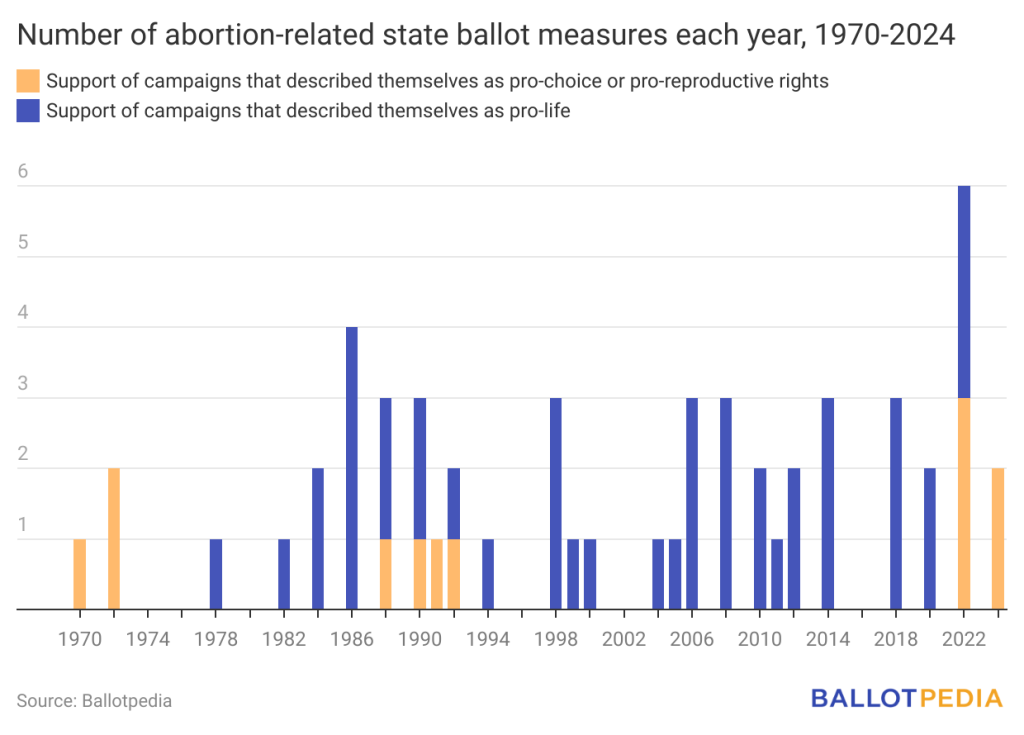Ohio could be the fourth state, following California, Michigan, and Vermont in 2022, to establish an explicit state constitutional right to abortion. On July 5, the campaign Ohioans for Reproductive Freedom submitted more than 710,131 signatures for a citizen-initiated constitutional amendment to provide that “every individual has a right to make and carry out one’s own reproductive decisions,” including decisions on contraception and abortion. At least 413,446 signatures need to be valid. The state has until July 25, 2023, to count and validate signatures. The constitutional amendment would be on the ballot at the election on Nov. 7, 2023.
Unlike California, Michigan, and Vermont, Ohio is a Republican trifecta—a state where Republicans control the House, Senate, and governor’s office—and voted for Donald Trump in 2016 and 2020. The constitutional amendment would also be on an odd-numbered year ballot, November 2023, rather than a mid-term or presidential general election.
As of July 5, no states are scheduled to vote on an abortion-related ballot measure in 2023. In 2024, voters in Maryland will decide on a constitutional amendment to establish a right to reproductive freedom, defined to include "decisions to prevent, continue, or end one's own pregnancy." Voters in New York will decide on a constitutional amendment to prohibit the denial of rights to an individual based on their "pregnancy, pregnancy outcomes, and reproductive healthcare and autonomy," along with other classes like ethnicity, disability, age, and sex.
The first abortion-related ballot measure was on the ballot in 1970. From 1970 to 2022, statewide ballots featured 53 abortion-related ballot measures, and 43 (81%) of these had the support of organizations that described themselves as pro-life. Voters approved 11 (26%) and rejected 32 (74%) of these 43 ballot measures. There were 10 abortion-related ballot measures that had the support of organizations that described themselves as pro-choice or pro-reproductive rights. Voters approved seven (70%) and rejected three (30%). In 2022, there were six statewide ballot measures related to abortion—the most on record for a given year.

Ohio has never voted on a ballot measure related to abortion. Abortion has been on the ballot in 24 states. The states with the highest numbers of abortion-related ballot measures are Colorado (nine), Oregon (six), California (four), and Washington (four).
The citizen-initiated constitutional amendment in Ohio has the support of the state Democratic Party, the ACLU, and Planned Parenthood. Dr. Sri Thakkilapati, co-founder of Ohioans for Reproductive Freedom, said, “We know that we are going to win in November. We are poised to put this—put abortion rights—in the hands of the voters, and we’re excited to announce this first victory on that.”
The Ohio Republican Party opposes the initiative, as does former Vice President Mike Pence and Ohio Right to Life. Amy Natoce, spokeswoman for the Protect Women Ohio PAC, said, “The ACLU’s attempts to hijack Ohio’s constitution to further its own radical agenda would be pathetic if they weren’t so dangerous.”
In August, voters in Ohio will decide on a ballot measure, Issue 1, to require a 60% vote on constitutional amendments, among other changes to the initiative process. Approval of Issue 1 would require a 60% vote on future citizen-initiated constitutional amendments, including the abortion rights amendment. In June 2023, a poll found that, of the people surveyed, 58% supported the abortion rights amendment.
On July 5, 2023, signatures were also filed for an initiative to legalize marijuana in Ohio, which would also appear on the ballot in November.
Additional reading:


